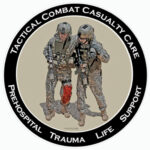Latest News

22nd Dec 2014

CoTCCC approved
The US CoTCCC (US Committee on Combat Casualty Care) have published the decision to include Celox Gauze in their guidelines and you can read it in the Journal of Special Operations Medicine (1).
The article also includes an extensive 14 page review of the background to the change. Here they explain the reasoning and benefits for including Celox Gauze in the guidelines. In particular they highlight the performance of Celox and other chitosan dressings in tests and human clinical use and the ability to work in “coagulopathic” bleeding (impaired clotting) as found in many trauma cases.
The reviewers for the CoTCCC find that many studies revealed that chitosan dressings* have strong trends toward faster onset of haemostasis, less total blood loss, less fluid resuscitation requirements and for the most important end point: enhanced survival. They review the major study by Rall and co-workers from the ONR in detail, and state “CEG [Celox Gauze] outperformed all other dressings with 90 % survival”. To highlight the relevance of coagulopathic bleedings, they quote research that 38 % of military casualties needing blood transfusion are coagulopathic, so there is a good chance that any one patient needing a haemostat is, or will become, coagulopathic. In a table comparing the haemostatic dressings, they showed that Celox Gauze stops coagulopathic bleeding. They also referred to the long history of safe use for the chitosan dressings and cited clinical cases in which Celox Gauze was used and left in place in patients for 24 to 48 hours. They refer to the US Special Operations Forces, NATO militaries, Emergency Services and Law Enforcement services that have already adopted Celox Gauze. They sum the review up by stating that there is an added benefit to adding chitosan-based dressings to their equipment for the US military troops. * The “third generation” chitosan dressings studies were Celox Gauze and ChitoGauze.
- Management of External Hemorrhage in Tactical Combat Casualty Care: Chitosan-Based Hemostatic Gauze Dressings – TCCC Guidelines-Change 13-05. Bennett BL, Littlejohn LF, Kheirabadi BS, Bulter FK, Kotwal RS, Dubick MA, Bailey JA. Journal of Special Operations Medicine 2014, Vol 14 (3) Pages 40 – 57
